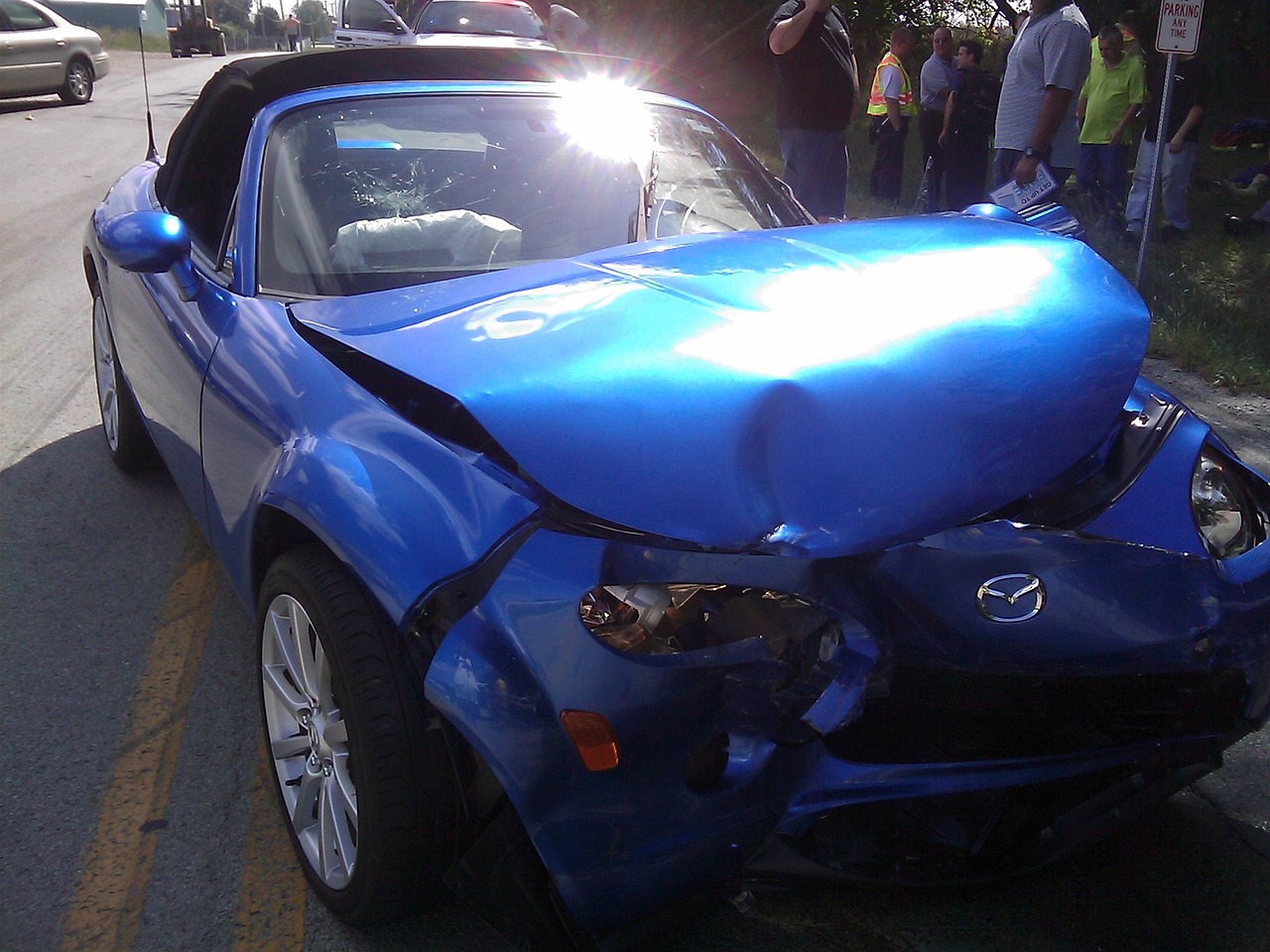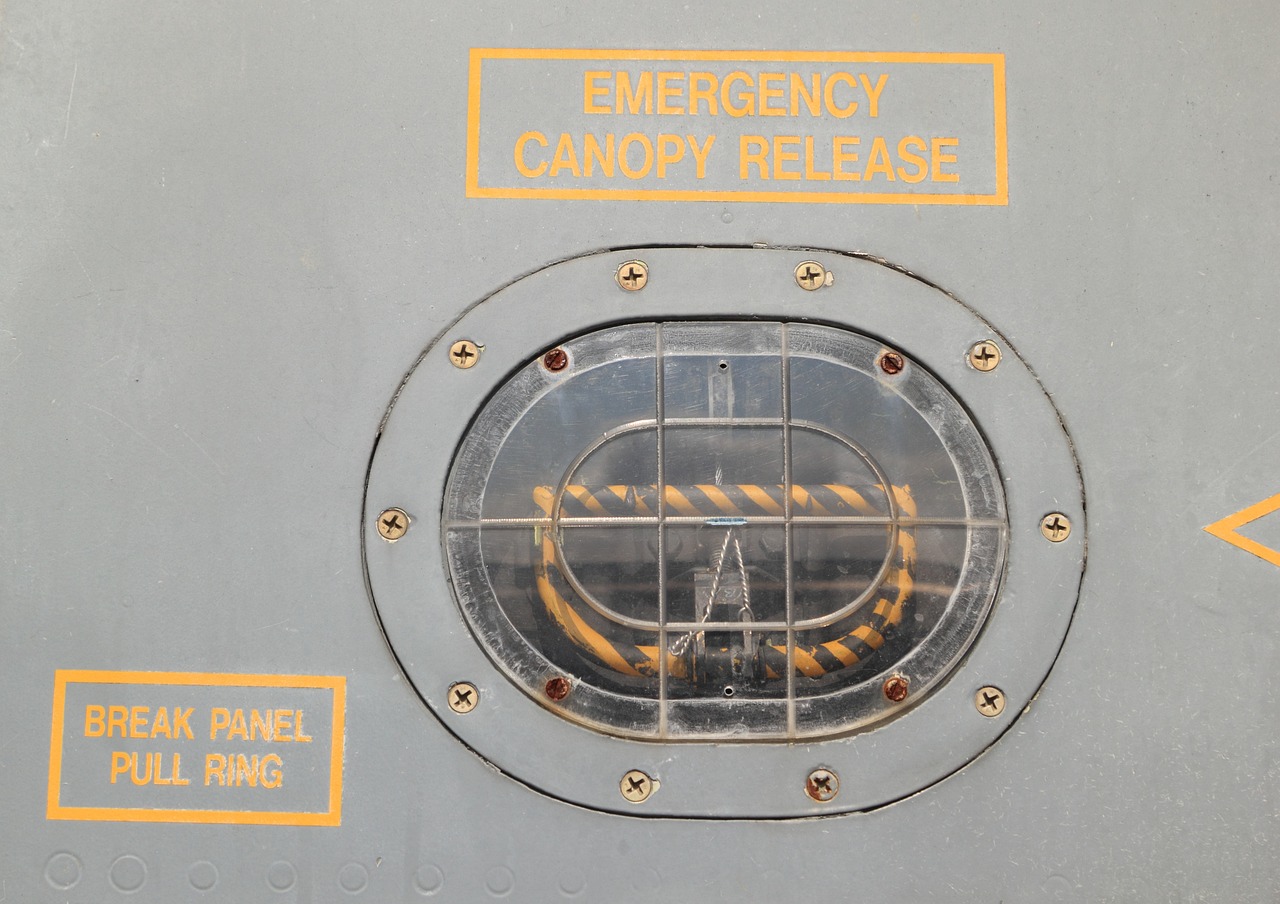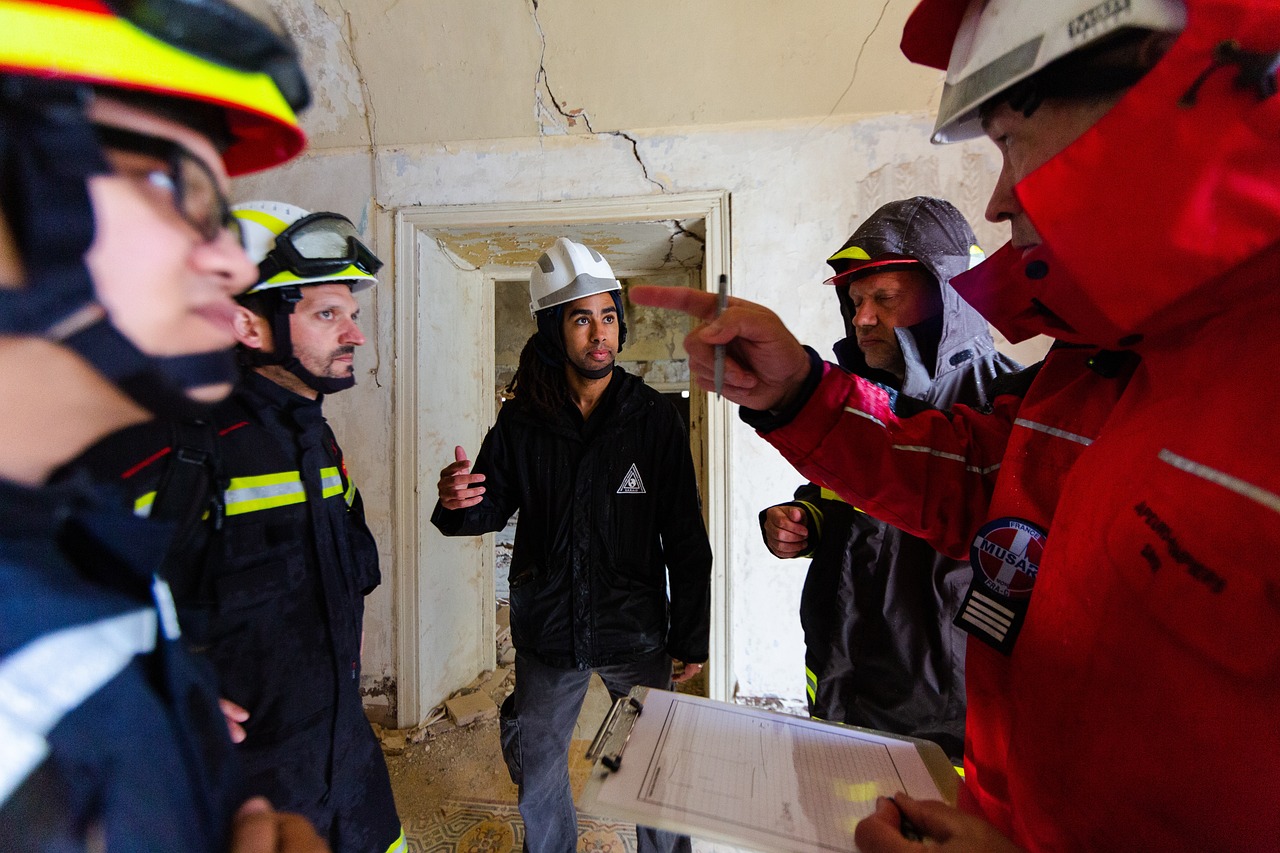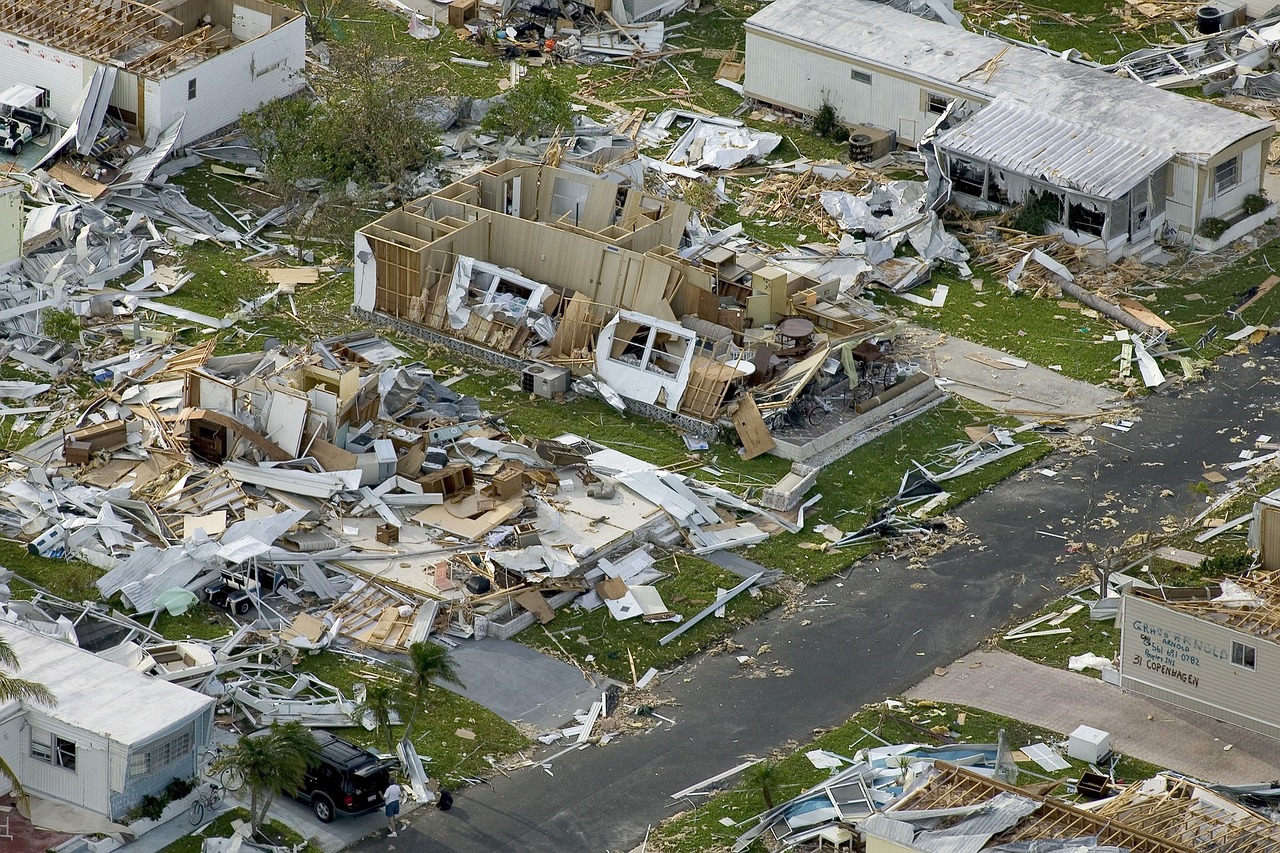Safety Measures for People with Chronic Conditions During a Disaster
Disasters can strike at any moment, often leaving chaos in their wake. For individuals with chronic conditions, such as diabetes, heart disease, or asthma, the stakes are even higher. These individuals face unique challenges that can complicate their health management during emergencies. Therefore, it's crucial to have a robust plan in place. By understanding the specific needs and risks associated with chronic conditions, individuals can take proactive steps to ensure their safety and well-being in the face of adversity. This article will guide you through essential safety measures that focus on preparation, response, and recovery strategies tailored for those with chronic health issues.
Chronic conditions encompass a wide range of long-term health issues, each requiring different levels of care and attention. Understanding these conditions is not just about recognizing symptoms; it’s about identifying specific needs and potential risks during disasters. For instance, someone with asthma may require immediate access to their inhaler, while a diabetic may need to monitor their blood sugar levels closely. By being aware of these nuances, individuals can better prepare themselves to receive appropriate care and support when disaster strikes.
Preparation is key for everyone, but it becomes even more critical for individuals with chronic conditions. Taking the time to create a comprehensive emergency plan can make all the difference in maintaining health and safety during a disaster. This section outlines necessary steps, including creating emergency plans, gathering supplies, and maintaining communication with healthcare providers.
An effective emergency plan should be as detailed as possible. It should include evacuation routes, communication strategies, and a list of medications. Knowing exactly what to do and where to go in case of an emergency can alleviate panic and confusion. For instance, consider mapping out your escape routes ahead of time and identifying safe places, such as shelters that cater to medical needs. This preparation allows individuals to act swiftly and efficiently when the need arises.
Knowing safe locations, such as shelters equipped for medical needs, is vital during a disaster. Research local shelters in advance and ensure they can accommodate your specific health requirements. This could mean confirming that they have necessary medical supplies or staff who understand chronic conditions. By preparing in advance, you can avoid the stress of searching for suitable accommodations during a crisis.
Building a support network of family, friends, and healthcare providers can provide crucial assistance during disasters. Having reliable contacts for help and information can make a world of difference. Consider creating a contact list that includes family members, friends, and healthcare professionals who can assist you in an emergency. This way, you won’t be alone in navigating the challenges that arise during a disaster.
Individuals with chronic conditions should gather essential supplies well before a disaster occurs. This includes medications, medical devices, and personal items that are necessary for managing their health. Ensure that you have at least a week's supply of medications and any medical equipment you may need, such as insulin pumps or nebulizers. Additionally, consider packing a personal health record that includes your medical history, allergies, and emergency contacts. This can be invaluable in ensuring you receive appropriate care during an emergency.
When a disaster strikes, knowing what immediate actions to take can be lifesaving. Staying informed, managing medications, and seeking assistance when needed are critical steps for individuals with chronic conditions. The chaos of a disaster can lead to confusion, but having a clear plan can help you navigate through it.
Staying updated with reliable information during a disaster is essential. Utilize various sources such as radio updates, mobile alerts, and social media to stay informed about the situation. This knowledge can help you make informed decisions about safety and health, ensuring that you are always one step ahead.
Managing medications during a disaster is critical for individuals with chronic conditions. Make sure you have access to your medications and that they are stored in a safe and easily reachable place. If you rely on refrigeration for certain medications, consider alternatives or insulated bags that can keep them cool for a short period. Consistency in adhering to your prescribed regimen is vital, even amidst the chaos of a disaster.
Recovery after a disaster can be particularly challenging for individuals with chronic conditions. The emotional and physical toll can be overwhelming, but there are strategies to aid in recovery. Accessing healthcare and community resources is essential. Reach out to your healthcare provider for follow-up appointments and ensure you have the necessary support to manage your health in the aftermath of a disaster. Community organizations can also offer assistance, from food supplies to mental health services, helping you regain stability and peace of mind.
1. What should I include in my emergency kit?
Your emergency kit should include medications, medical supplies, personal hygiene items, a first-aid kit, and a copy of your health records.
2. How can I stay informed during a disaster?
Use multiple sources for updates, such as radio broadcasts, official social media accounts, and local news outlets.
3. Who should be part of my support network?
Include family, friends, neighbors, and healthcare providers who can assist you during an emergency.
4. What if I have to evacuate?
Know your evacuation routes and have a plan in place for where you will go. Make sure to bring your emergency kit and any necessary medications.

Understanding Chronic Conditions
Chronic conditions are long-lasting health issues that can significantly impact an individual's quality of life. These conditions range from heart disease, diabetes, and asthma to mental health disorders like depression and anxiety. Understanding these conditions is crucial, especially in the context of disasters, as they often require ongoing management and specific care. When a disaster strikes, the usual routines and access to healthcare can be disrupted, leading to heightened risks for individuals with these conditions.
It's important to recognize that each chronic condition comes with its own set of needs and challenges. For instance, someone with diabetes must manage their blood sugar levels, which can be affected by stress and changes in routine during emergencies. Similarly, individuals with respiratory issues may struggle if they are exposed to dust or smoke during a disaster. Thus, understanding the unique requirements of each chronic condition not only helps in identifying risks but also ensures that individuals receive appropriate care and support when they need it the most.
To illustrate the diversity of chronic conditions, consider the following table that highlights some common chronic conditions along with their specific needs:
| Chronic Condition | Specific Needs |
|---|---|
| Diabetes | Access to insulin and monitoring equipment; stable food supply. |
| Asthma | Access to inhalers; clean air environments. |
| Heart Disease | Medication adherence; stress management. |
| Mental Health Disorders | Continued access to therapy and medication; support networks. |
By understanding these conditions and their specific needs, individuals can better prepare for potential disasters. This preparation can involve various strategies, such as maintaining a list of medications, ensuring access to necessary medical devices, and establishing a clear communication plan with healthcare providers. Remember, being proactive can make all the difference when disaster strikes. So, ask yourself: are you prepared? Are you aware of what your specific needs are in times of crisis?
In summary, understanding chronic conditions is not just about recognizing the health issues themselves, but also about acknowledging the potential challenges that can arise during a disaster. By being informed and prepared, individuals with chronic conditions can safeguard their health and well-being, ensuring they are ready to face any emergency that comes their way.

Preparation Before a Disaster
When it comes to preparing for a disaster, individuals with chronic conditions must take proactive steps to safeguard their health and well-being. It's not just about having a plan; it's about creating a comprehensive strategy that addresses your unique needs. Imagine being caught in the chaos of a disaster without the necessary supplies or support. It’s a situation no one wants to find themselves in, especially when managing a chronic condition. So, let’s dive into the essential steps you should take to prepare effectively.
First and foremost, creating an emergency plan is vital. This plan should include evacuation routes and communication strategies to ensure you can reach your loved ones or healthcare providers when it matters most. Think of it as your roadmap during a time of uncertainty. You wouldn’t go on a road trip without knowing how to get to your destination, right? Similarly, knowing where to go and what to do during a disaster can make all the difference.
Your emergency plan should be tailored specifically to your needs. Start by identifying evacuation routes from your home to safe locations, such as designated shelters or hospitals. These routes should be easily accessible and should consider any mobility limitations you might have. Additionally, establish a communication plan with family and friends. Make sure everyone knows how to reach each other and has the necessary contact information. A simple table can help organize this information:
| Contact Name | Relationship | Phone Number | Address |
|---|---|---|---|
| John Doe | Brother | (123) 456-7890 | 123 Main St, City |
| Jane Smith | Friend | (987) 654-3210 | 456 Elm St, City |
Another critical aspect of your emergency plan is to maintain a detailed list of your medications. Include the names of your medications, dosages, and the prescribing physician’s contact information. This information is crucial for anyone who may need to assist you during a disaster, ensuring you receive the appropriate medical attention.
Knowing where to go during a disaster is equally important. Research and identify safe locations that are equipped to handle medical needs, such as shelters that can accommodate individuals with chronic conditions. It’s essential to visit these locations beforehand, if possible, to familiarize yourself with the environment and the resources available. This preparation can alleviate anxiety and make the transition smoother when a disaster strikes.
Building a robust support network is another crucial step in your disaster preparedness plan. Reach out to family, friends, and healthcare providers to establish a reliable circle of support. Having a list of contacts you can turn to during a crisis can provide peace of mind and ensure you have someone to help you navigate the challenges that may arise. This network can also help you stay informed about local resources and updates during a disaster.
Lastly, don’t forget to gather essential supplies. This includes not only your medications but also medical devices, personal items, and any other necessities that you may need to manage your health effectively. Having everything packed and ready to go can save precious time and reduce stress when moments count.
In summary, preparation is the key to safety for individuals with chronic conditions during a disaster. By creating an effective emergency plan, identifying safe locations, establishing a support network, and gathering essential supplies, you can navigate the uncertainties of a disaster with greater confidence and security. Remember, it’s better to be over-prepared than underprepared!

Creating an Emergency Plan
When it comes to ensuring safety during a disaster, having a well-thought-out emergency plan is not just a good idea—it's essential, especially for individuals with chronic conditions. Think of your emergency plan as your lifeline; it’s the roadmap that guides you through the chaos. The first step in crafting this plan is to sit down and assess your specific needs. What medications do you take? Do you have any medical devices that require special care? By identifying these needs, you can tailor your plan to suit your unique situation.
Your emergency plan should include several key components. First, outline evacuation routes—know where to go and how to get there. This could mean mapping out the quickest routes to local shelters or identifying friends or family who live in safer areas. It’s also important to have a communication strategy in place. Who will you contact in case of an emergency? Make a list of important phone numbers and keep it accessible. In times of stress, it’s easy to forget details, so having this information at your fingertips can be a lifesaver.
Another critical element to include is a medication list. This list should detail the names of your medications, dosages, and any specific instructions for taking them. You might even want to keep a small supply of your medications in your emergency kit, just in case you can’t access your pharmacy. Consider using a table to organize this information neatly:
| Medication Name | Dosage | Instructions |
|---|---|---|
| Medication A | 10 mg | Take once daily |
| Medication B | 20 mg | Take twice daily |
Next, it’s vital to identify safe locations where you can seek shelter. Not all shelters are created equal; some are equipped to handle medical needs better than others. Research local shelters in advance and find out which ones can accommodate your specific requirements. This proactive approach can save you valuable time and stress in the heat of the moment.
Finally, don’t underestimate the importance of establishing a support network. Having a group of reliable contacts—family, friends, or healthcare providers—can make all the difference. These individuals can help you implement your emergency plan, provide transportation, or simply check in on you during a crisis. Make sure everyone in your network understands your plan and knows how to assist you.
In summary, creating an emergency plan is about more than just being prepared; it’s about ensuring your health and safety when it matters most. By taking these steps, you can face disasters with confidence, knowing you have a solid plan in place to protect yourself and your well-being.

Identifying Safe Locations
When disaster strikes, knowing where to go can be the difference between safety and chaos, especially for individuals with chronic conditions. It’s crucial to identify safe locations well in advance, so you aren’t left scrambling when the time comes. Think of these places as your lifeboats in a turbulent sea; they can provide shelter, medical care, and a sense of security when everything else feels uncertain.
First, consider local shelters that are equipped to handle medical needs. Many communities have designated emergency shelters that cater specifically to individuals with health concerns. These shelters often have trained staff who understand chronic conditions and can offer the necessary support. To find these locations, you can:
- Check your local government’s website for emergency management resources.
- Contact your healthcare provider or local hospitals for recommendations.
- Join community groups focused on emergency preparedness.
Additionally, it’s wise to familiarize yourself with hospitals and clinics that are nearby. In the event of a disaster, you may need to access medical care quickly. Make a note of the closest facilities, their contact numbers, and the services they provide. Creating a map that highlights these locations can be incredibly beneficial. This way, you can visualize the routes to take and avoid any potential hazards along the way.
Another aspect to consider is the availability of resources at these safe locations. Not all shelters are created equal; some may have limited medical supplies or staff trained to handle specific chronic conditions. Before a disaster occurs, ask the following questions:
- Does the shelter have a pharmacy or access to medications?
- Are there medical professionals onsite?
- What provisions are in place for individuals with mobility issues?
Once you’ve identified these safe locations, it’s essential to communicate this information with your support network. Share your plan with family and friends, so they know where to find you or how to assist you during an emergency. Think of it as building a safety net—when you have a solid plan in place, you can feel more at ease knowing that you have options.
In summary, identifying safe locations well before a disaster can significantly enhance your preparedness. By knowing where to go and what resources are available, you can safeguard your health and well-being amidst the chaos. Remember, the time to plan is now, while the skies are clear. Don’t wait for the storm to hit; take control of your safety today!

Establishing a Support Network
When it comes to navigating the turbulent waters of a disaster, having a solid support network can be your lifeline. Think of it as your personal safety net, woven from the threads of family, friends, and healthcare providers. Each person in your network plays a unique role, providing not just emotional support but also practical help when you need it most. Imagine facing a storm without a compass; that's what it's like to go through a disaster without a support system. So, how do you build this vital network?
First, start by identifying key individuals in your life who can offer assistance. This could include:
- Family Members: They are often the first line of defense. They know your needs and can help you with everything from transportation to emotional support.
- Friends: Close friends can provide companionship and help with daily tasks, making the burden lighter during tough times.
- Healthcare Providers: Your doctors and nurses can offer specialized advice tailored to your chronic condition, ensuring you have the right medical support.
Once you've identified these individuals, it's crucial to communicate openly about your needs and preferences. For instance, let them know how they can help you during an emergency. Would you need someone to check on your medication supply? Or perhaps you need assistance with evacuation plans? Being clear about your expectations will empower them to act effectively when the time comes.
Additionally, consider creating a group chat or a dedicated communication channel where you can share updates, especially during a disaster. This way, everyone in your support network can stay informed about your situation and respond quickly. It’s like having a virtual lifebuoy that keeps everyone connected, no matter the circumstances.
Don’t forget to include local resources in your support network. This could be local community centers, disaster relief organizations, or even support groups for individuals with chronic conditions. These organizations can provide invaluable resources, including information on emergency shelters that cater to medical needs, and they can connect you with others who understand your situation. Having a diverse support network not only broadens your safety net but also enriches your experience with shared knowledge and resources.
Finally, remember that establishing a support network is not a one-time task. It requires ongoing effort and nurturing. Regularly check in with your contacts, share updates about your health, and reciprocate support when they need it. After all, a strong support network is like a garden; it flourishes with care and attention.
Q: How can I find local support groups for chronic conditions?
A: You can start by searching online for local health organizations or community centers that cater to your specific condition. Social media platforms also often have groups where individuals share experiences and resources.
Q: What if my family lives far away?
A: Leverage technology! Use video calls, messaging apps, and social media to keep in touch. You can also reach out to local friends or neighbors who can help during a disaster.
Q: How often should I update my support network about my health?
A: It’s a good idea to have regular check-ins, especially if your condition changes. Monthly updates or whenever there’s a significant change in your health can keep your network informed and prepared.

Gathering Essential Supplies
This article discusses essential safety measures that individuals with chronic conditions should take during disasters to ensure their health and well-being, focusing on preparation, response, and recovery strategies.
Chronic conditions encompass a range of long-term health issues. Understanding these conditions helps in identifying specific needs and risks during disasters, ensuring that individuals receive appropriate care and support.
Preparing for a disaster is crucial for individuals with chronic conditions. This section outlines necessary steps, including creating emergency plans, gathering supplies, and maintaining communication with healthcare providers.
An effective emergency plan should include evacuation routes, communication strategies, and a list of medications. This ensures individuals know what to do and where to go in case of an emergency.
Knowing safe locations, such as shelters equipped for medical needs, is vital. This section discusses how to identify and prepare for these locations in advance of a disaster.
Building a support network of family, friends, and healthcare providers can provide crucial assistance during disasters. This section emphasizes the importance of having reliable contacts for help and information.
When it comes to facing a disaster, having the right supplies can make all the difference, especially for individuals with chronic conditions. Imagine being in a situation where you can't access your necessary medications or medical devices; it can be overwhelming and frightening. Therefore, it's essential to gather a comprehensive set of supplies well in advance. Start by making a list of your daily medications, ensuring you have enough to last at least a week, if not longer. This includes not only prescription drugs but also over-the-counter remedies that you may need.
In addition to medications, consider other medical supplies that are crucial for managing your condition. This might include:
- Medical devices (like inhalers, glucose monitors, or CPAP machines)
- First aid supplies (bandages, antiseptics, etc.)
- Extra batteries for devices that require them
- Personal hygiene items (toothbrush, soap, etc.)
Furthermore, it’s wise to have an emergency kit that includes essential items such as food, water, and important documents. Think of this kit as your lifeline. You never know when you might need it, so having it ready can alleviate a lot of stress. For example, you might want to include:
| Item | Purpose |
|---|---|
| Non-perishable food | To sustain energy and nutrition during a crisis |
| Water | To stay hydrated, especially if access to clean water is limited |
| Flashlight and batteries | To navigate in the dark and stay safe |
| Important documents | To prove identity and access necessary services |
Finally, don’t forget to regularly check and update your supplies. Medications can expire, and your needs may change over time. By keeping your supplies current, you ensure that you are always ready to face whatever challenges may come your way during a disaster.
This section focuses on immediate actions individuals with chronic conditions should take during a disaster, including staying informed, managing medications, and seeking assistance when needed.
Staying updated with reliable information during a disaster is essential. This section discusses how to access news and alerts to make informed decisions about safety and health.
Managing medications during a disaster is critical for individuals with chronic conditions. This section outlines strategies for ensuring access to medications and maintaining adherence to prescribed regimens.
Recovery after a disaster can be challenging for individuals with chronic conditions. This section highlights strategies for physical and emotional recovery, including accessing healthcare and community resources.
Q: What should I include in my emergency kit?
A: Your emergency kit should include medications, medical devices, non-perishable food, water, a flashlight, batteries, and important documents.
Q: How often should I check my supplies?
A: It's advisable to check your supplies at least once every six months to ensure everything is up to date and in good condition.
Q: Where can I find safe shelter during a disaster?
A: Local emergency management agencies often provide information about designated shelters. It's wise to identify these locations ahead of time.

During a Disaster: Immediate Actions
When a disaster strikes, the chaos can be overwhelming, especially for individuals with chronic conditions. The first thing to remember is to stay calm. Panic can cloud your judgment and lead to hasty decisions that may not be in your best interest. Focus on what you can control and take immediate actions to ensure your safety and well-being.
One of the most critical steps during a disaster is staying informed. In today’s digital age, reliable information is at our fingertips, but it’s essential to filter out the noise from social media and stick to credible sources. Tune into local news broadcasts, radio stations, or official social media accounts from emergency services. This will help you stay updated on evacuation orders, shelter locations, and other essential information. Remember, knowing what’s happening around you can significantly impact your safety.
Managing your medications is another vital action during a disaster. For individuals with chronic conditions, missing a dose can lead to serious health complications. Here are some strategies to ensure you have access to your medications:
- Keep a medication list: Write down all your medications, dosages, and any specific instructions. This list should be easily accessible.
- Pack extra supplies: If possible, keep a stash of extra medications in your emergency kit. Always check expiration dates and rotate supplies regularly.
- Know your pharmacy options: Familiarize yourself with nearby pharmacies that may offer emergency refills or support during a disaster.
In addition to managing medications, you should also be prepared to seek assistance when needed. Don’t hesitate to reach out to family, friends, or healthcare providers who can help you navigate the situation. Whether it’s for transportation to a safe location or support in managing your health, having a network of reliable contacts can make a world of difference. Consider establishing a communication plan with your support network so that everyone knows how to reach each other during a crisis.
Lastly, remember that your mental health is just as important as your physical health during a disaster. The stress of the situation can be overwhelming, so take a moment to breathe and practice calming techniques. Whether it’s deep breathing, meditation, or simply talking to someone you trust, prioritize your emotional well-being amid the chaos.
Q: What should I include in my emergency kit?
A: Your emergency kit should include essential medications, a first-aid kit, food, water, personal hygiene items, and important documents. Don’t forget to add any medical devices you may need!
Q: How can I stay informed during a disaster?
A: Tune into local news channels, follow official social media accounts of emergency services, and use reliable weather apps to get real-time updates.
Q: What if I have to evacuate?
A: If evacuation is necessary, make sure you have your emergency kit ready, know your evacuation routes, and have a plan in place for where you will stay.

Staying Informed
Staying informed during a disaster is not just a good idea; it’s a lifeline for individuals with chronic conditions. Imagine being in the middle of a storm, and all you can think about is how your health will be affected. The chaos around you can be overwhelming, but having the right information can make all the difference. So, how can you ensure that you’re getting the most accurate and timely updates?
First and foremost, it’s essential to have a reliable source of information. This could be through local news stations, weather apps, or official government websites. Many people underestimate the power of technology in times of crisis, but your smartphone can be your best friend. Download apps that provide real-time alerts about severe weather, emergencies, or evacuations. For instance, apps like FEMA, Red Cross, or local emergency management apps can keep you updated on the situation.
Moreover, consider setting up alerts on your phone for news updates. This way, you won’t have to constantly check the news; instead, you’ll receive notifications directly. It’s like having a personal assistant who keeps you informed about what’s happening around you, allowing you to focus on your health and safety. Remember, information is power, and in a disaster, it can help you make decisions that could save your life.
Another critical aspect is to maintain communication with your healthcare providers. They can offer guidance tailored to your specific health needs. If you have a chronic condition, your doctor may have specific recommendations on how to manage your health during a disaster. Make sure to have their contact information readily available, and don’t hesitate to reach out if you have concerns. You might even consider scheduling a check-in call before a disaster strikes, just to ensure you’re on the same page.
Finally, don’t forget about community resources. Local organizations, such as shelters or health clinics, often provide valuable information during disasters. They can inform you about safe locations, medical assistance, and other resources available in your area. Keeping a list of these contacts handy can help you act quickly when time is of the essence.
In summary, staying informed during a disaster is about creating a web of reliable information sources that cater to your needs. By leveraging technology, maintaining communication with healthcare providers, and utilizing community resources, you can navigate the storm with confidence. Remember, the more informed you are, the better equipped you will be to handle whatever comes your way.
- What should I do if I lose power during a disaster?
If you lose power, try to keep your medications at the right temperature. If possible, use a cooler with ice packs to maintain the temperature of sensitive medications.
- How can I ensure my medical devices stay charged?
Keep portable chargers and extra batteries on hand. If you know a disaster is approaching, charge all devices in advance.
- What if I need medical assistance during a disaster?
Contact your healthcare provider or local emergency services immediately. Have a list of nearby hospitals and clinics ready.

Managing Medications
When disaster strikes, managing medications becomes a top priority for individuals with chronic conditions. Imagine being in the midst of chaos, and you suddenly realize that your health depends on a few essential pills. It can be overwhelming, right? To avoid this panic, it’s crucial to have a solid plan in place that ensures you can access and manage your medications effectively, even in the most challenging circumstances.
First and foremost, you should create a comprehensive medication list. This list should include the names of your medications, dosages, and the schedule for taking them. Keep this document handy, perhaps in a waterproof bag or a digital format on your phone. In addition, consider including details such as the prescribing doctor’s contact information and any allergies you may have. This will not only help you but also assist emergency responders in delivering the right care.
It's also wise to maintain an adequate supply of your medications. Experts recommend having at least a 30-day supply on hand at all times, especially before hurricane season or other disaster-prone periods. This might mean coordinating with your pharmacy to refill prescriptions early or exploring mail-order options. Having a buffer can make a significant difference in your health management during a disaster.
Furthermore, consider the possibility of needing to transport your medications. If you have to evacuate, pack your medications in a cool, dry place to avoid degradation. Some medications, like insulin or certain antibiotics, require specific storage conditions. Keeping them in insulated bags or containers can help maintain their efficacy. Don’t forget to include any necessary medical supplies, such as syringes or inhalers, in your emergency kit.
Lastly, communication is key. Make sure to inform your family and friends about your medication needs. They can help remind you to take your meds or assist in finding replacements if you run out. If you have a healthcare provider, stay in touch with them before and during a disaster. They can offer invaluable advice and support to ensure you remain healthy and safe.
In summary, managing medications during a disaster requires foresight and preparation. By keeping an updated medication list, maintaining an adequate supply, ensuring proper storage, and fostering communication with your support network, you can navigate the storm with greater ease. After all, your health is your most important asset, and being proactive can make all the difference when the unexpected occurs.
- What should I include in my medication list? Your medication list should include the names of your medications, dosages, administration schedules, prescribing doctor's contact information, and any known allergies.
- How much medication should I keep on hand? It's advisable to have at least a 30-day supply of your medications, especially during disaster-prone seasons.
- How can I ensure my medications remain effective during a disaster? Store your medications in a cool, dry place and use insulated bags for those that require temperature control.
- What should I do if I run out of medication during a disaster? Stay in contact with your healthcare provider and support network; they can assist you in finding replacements or emergency supplies.

Post-Disaster Recovery Strategies
Recovering from a disaster can feel like climbing a mountain, especially for individuals with chronic conditions. It's not just about getting back to normal; it’s about finding a new normal that accommodates your health needs. The journey to recovery involves a mix of physical, emotional, and social strategies that can help you regain your footing.
First and foremost, accessing healthcare after a disaster is crucial. Many healthcare facilities may be overwhelmed or temporarily closed, so it’s important to have a plan in place. This means knowing where to go for medical care, whether it’s a local clinic or a hospital. Keep a list of healthcare providers and their contact information handy, as well as any nearby facilities that might offer specialized services for your chronic condition.
Consider reaching out to your healthcare provider as soon as possible after a disaster. They can help you assess your health status and adjust your treatment plan if necessary. It’s like having a personal coach who knows your game plan and can help you tweak it to fit the current situation. Don’t hesitate to ask about telehealth options if in-person visits are challenging. This can be a lifesaver, allowing you to consult with your healthcare team from the comfort of your home.
Emotional recovery is just as important as physical recovery. Disasters can take a toll on mental health, leading to feelings of anxiety, depression, or even post-traumatic stress. It’s essential to acknowledge these feelings and seek support. Whether it’s talking to a therapist, joining a support group, or simply confiding in friends and family, sharing your experiences can lighten the emotional load. Remember, you’re not alone in this; many people are navigating similar challenges.
Community resources can also play a significant role in recovery. Local organizations often provide support services, including food assistance, counseling, and health resources. It’s worthwhile to investigate what’s available in your area. For example, some communities may have programs specifically designed for individuals with chronic conditions, offering everything from meal delivery to health workshops. Think of these resources as a safety net, helping you bounce back more quickly.
Finally, it’s vital to keep your support network informed about your needs and experiences. Having a reliable group of friends, family, and healthcare providers can make a world of difference during recovery. Share your challenges, celebrate your small victories, and lean on them when you need help. It’s like having a team cheering you on as you navigate the ups and downs of recovery.
- What should I do if my medications are lost during a disaster?
Contact your healthcare provider or local pharmacy as soon as possible to get replacements. Many pharmacies have emergency protocols for such situations. - How can I manage my stress after a disaster?
Consider mindfulness practices, such as meditation or yoga, and don’t hesitate to seek professional help if needed. - Are there community resources available for individuals with chronic conditions?
Yes, many communities offer support services for individuals with chronic illnesses, including food assistance and counseling.
Frequently Asked Questions
- What should I include in my emergency plan for a disaster?
Your emergency plan should include evacuation routes, communication strategies, and a detailed list of your medications. Don't forget to note any special medical needs and ensure your loved ones know your plan!
- How can I gather essential supplies before a disaster?
Start by making a checklist of all necessary items, such as medications, medical devices, and personal hygiene products. Stock up on non-perishable food and water, and don’t forget to include any comfort items that will help you feel secure!
- What should I do to stay informed during a disaster?
Keep a battery-powered radio handy to receive updates, and follow local news channels online or through social media. It's crucial to have multiple sources of information to stay updated on the situation!
- How can I manage my medications during a disaster?
Ensure you have an adequate supply of your medications on hand, ideally enough for at least a week. Consider using pill organizers and keep a copy of your prescriptions with you in case you need to refill them elsewhere!
- What are some post-disaster recovery strategies for individuals with chronic conditions?
Focus on accessing healthcare services and community resources to help you recover. Connect with support groups for emotional assistance and reach out to healthcare providers to discuss any changes in your health after the disaster.
- How can I build a support network before a disaster strikes?
Reach out to family, friends, and neighbors to establish a support system. Make a list of reliable contacts who can assist you during emergencies, and don’t hesitate to communicate your specific needs!



















